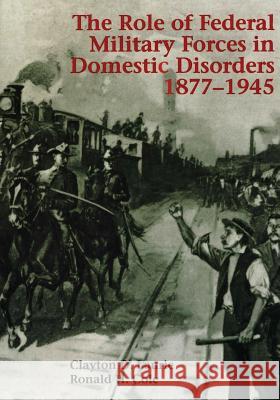The Role of Federal Military Forces in Domestic Disorders, 1877-1945 » książka
The Role of Federal Military Forces in Domestic Disorders, 1877-1945
ISBN-13: 9781517253677 / Angielski / Miękka / 2015 / 492 str.
Though the turmoil of the cold war focused the Army on the challenges of conventional and nuclear conflict, the Army has a rich legacy of conducting domestic support operations. These have included activities from disaster relief to managing Indian reservations, military government in the post-Civil War South to supporting domestic law enforcement. This study focuses on the use of federal troops in domestic disorders from 1877 through 1945. These operations are not only an important part of our Army's past, but they portend lessons for the future. As the U.S. Army enters its third century of service to the nation, it faces an era in which it will undoubtedly be called on again to con duct domestic support operations at home and stability and peace operations overseas. This work, the second of three volumes on the history of Army domestic support operations, encompasses a tumultuous era, the rise of industrial America with attendant social dislocation and strife. It begins with the first major U.S. Army intervention in a labor dispute, the Great Railway Strike of 1877, and concludes with War Department seizures of strike-plagued industries during World War II. The evolution of the Army's role in domes tic support operations, its strict adherence to law, and the disciplined manner in which it conducted these difficult and often unpopular operations are major themes of this volume. Throughout these troubled times presidents came to rely on the U.S. Army to provide units for civil disturbance duty. The national leadership began to tap the Army for units as a first, not last, resort. Army units not only enforced federal authority, but also aided local and state officials in maintaining law and order, protecting lives and property, and preserving social and political stability. The Army responded promptly and decisively to unrest, exercising disciplined responses that quelled disorders within legal boundaries. Army forces employed effective nonlethal tactics, techniques, and procedures during a time when the nation was buffeted by the greatest number of labor and race-related disturbances in its history, and local authorities often demonstrated far less forbearance. Though this is a study of the U.S. Army's experience at a specific time in U.S. history, the issues it addresses offer broader perspectives. Similar challenges may be faced by active and reserve Army units both in the United States and overseas. In particular, U.S. forces may be called on to participate in peace operations, especially in countries con fronting social unrest resulting from ethnic tensions and rapidly changing economies. Lessons gleaned from this chapter in our Army's past include the value of highly disciplined soldiers, careful operational and logistical planning, flexibility, and initiative at the lowest levels of command. These hallmarks of a trained and ready force apply not only to domestic support, but also to the full range of military operations the United States may face in the twenty-first century."
Zawartość książki może nie spełniać oczekiwań – reklamacje nie obejmują treści, która mogła nie być redakcyjnie ani merytorycznie opracowana.











